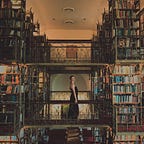Pandemics and Public Life: Urbanity’s Star-Crossed Lovers
American urban life is characterized by a diversity that makes anticipating its reaction to any number of influences — let alone chaotic, unpredictable influences such as the present global pandemic — close to impossible. Over the past century or so, American citizens have witnessed an exponential weakening of public life, ushered in by a suburban and car-dependent age. Strolls on shared city sidewalks have been replaced with private commutes from our driver’s seats; record store listening rooms were quietly made obsolete by online music platforms; movie theaters now find themselves in fierce competition with at-home streaming services. Some have argued, therefore, that as this pandemic forces us to forego the social interaction that gives cities life, it will accelerate an already-occurring process of privatization and retreat from our communal existence.
Yet, as I step out of the car in an uncharacteristically-full open space parking lot in the foothills of the Sandia Mountains, I see Albuquerque, New Mexico’s citizens embracing simple existence in our public spaces like I have hardly ever witnessed before. I am led to wonder if these habits will stick — if people will grow to cherish and strive to protect the freedom of participating in activities in our public and semi-public spaces in a way that was formerly threatened by a fascination with the activities of the digital age. As I see eager children on their bikes ready to set off on the beaten dirt trails, smiling and laughing and simply happy just to be outside, it feels like they might. Could a pandemic that is causing people to point at public life and interaction with blame and disgust actually act as a saving grace for public existence as people desperately grasp onto simple opportunities to get off of their couches and away from their screens?
Another part of me thinks, perhaps, that it is only easy for me to ask these questions from New Mexico, where the pandemic has had a relatively light impact and where the weather outside fluctuates between eighties and nineties with only blue skies in sight. I know that the friends I have left behind on the cloudy, still-snowy east coast, especially in hard-hit commercial- and business-oriented concrete jungles such as New York and Washington D.C., have scarcely left their rooms since returning home early from campus. Short walks around the neighborhood are a rare luxury, and the grandest outings to be heard of are for socially-distanced trips to the market and back. In these cities where the primary motivation to leave the home is to go to work, and perhaps a restaurant or bar, are the projections towards a more private life unfortunately accurate? I recognize that, in general, the public life of western America is oriented around outdoor recreation and other leisure activities which don’t necessarily require anything to be “open,” per se, for one to participate in them. However, for many of the bustling communities of our eastern cities, public life is heavily characterized by the hustle to and from work. It is hard to imagine that this public life will not be diminished as employers take advantage of the newfound recognition that we now have the technology to perform much of this work remotely, from personal computers and home offices that cost less than centralized offices in the downtown business district.
Understanding what American public life will look like in the wake of this pandemic necessitates answers to further questions of health and politics, as well. Cities with high levels of preexisting conditions, such as asthma, may be relatively less eager to accept a return to public life due to fear of health impacts. This leads us to further wonder if centuries-old patterns of environmental injustice and health disparities that have led low-income communities and people of color to suffer from such conditions at higher rates will be further exacerbated by either an unsafe, forced return of an at-risk working class into harm’s way, or, conversely, a disproportionately stalled economy due to slowed reopening processes. Further, as many Americans begin to protest state closures and stay-at-home orders with the claim that “the solution is worse than the problem,” the virus itself has become even more of a politicized issue. We might, therefore, expect that a city’s political leanings will decide how much of a lasting impact the pandemic will leave on our public lives — an issue which may be complicated in states such as California, which contain a variety of cities with a wide diversity of political opinions.
I have also been thinking about public life less as a homogenous force made up of similar pieces which will all react the same to these pressures, and more as a wild, varied collection of activities and places that will all be impacted quite differently. In particular, as large gatherings of people in spaces such as stadiums and halls are so greatly affected by fear of the virus and necessary distancing responses, I wonder which of these forms of entertainment will survive, and which will not. I am guessing that those with fairly diverse followings that include young people and have successfully embraced participation in the digital age, such as sporting events, do not face much of an obstacle to a strong comeback once conditions are safer. However, I have feared that this setback may mean the end for entertainment forms already tagged as “in danger,” with older followings and lesser participation in digital platforms, such as classical music and dance performances. Perhaps, as an orchestral violinist, this is a fear driven by personal concerns. I hope so, at least. I suppose that I have conceded to viewing the survival of public life in general as depending on a number of place-specific forces that are quite complex and difficult to track. In truth, I simply believe that only time will tell.
